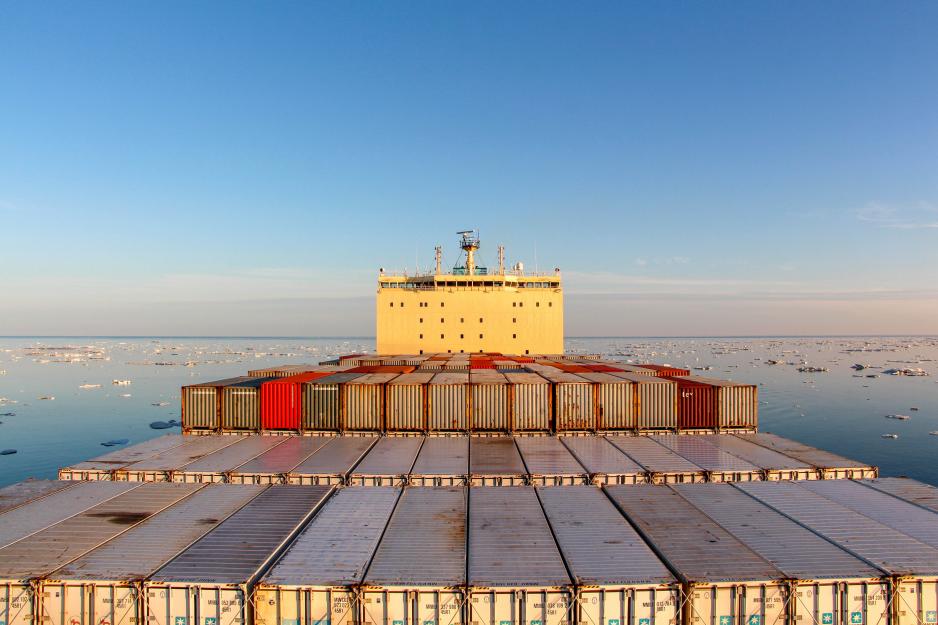Loopholes in a proposed Arctic HFO ban seriously weaken environmental protections, a new report says
“These waivers and exemptions have just made it so that it's really no ban at all.”

A new report released on Thursday suggests that a recommended ban on heavy fuel oil in the Arctic would not go far enough, fast enough, to prevent environmental damage.
When ships burn heavy fuel oil, it produces black carbon, or soot, that can cause health hazards, pollute waterways and coat snow and ice, accelerating warming and melting. And if the thick, sludgy oil were spilled, it would be extremely difficult or impossible to clean up in remote Arctic locations.
In March 2019, for instance, a cruise ship carrying 343 tons of HFOs nearly grounded off the coast of Norway, renewing calls for an HFO ban. The fuel is already banned in Antarctica, as well as in the Norwegian national park waters surrounding Svalbard.
Earlier this year, the pollution subcommittee of the International Maritime Organization proposed phasing out the use and carriage of HFO in Arctic waters by 2024 in some cases, with exceptions for Arctic-flagged vessels extending until July 2029.
In November, the IMO’s Marine Environmental Protection Committee will take up these recommendations for discussion.
[The IMO moves closer to an Arctic HFO ban — but with some exceptions]
“These waivers and exemptions have just made it so that it’s really no ban at all,” said Bryan Comer, a senior marine researcher at the International Council on Clean Transportation (ICCT) and lead author of the report.
The ICCT analysis found that the ban would only apply to about 30 percent of HFO carriage and 16 percent of HFO use, based on 2019 vessel traffic, and would therefore only reduce black carbon emissions by 5 percent.
According to the ICCT, the amount of heavy fuel oils used by bulk carriers grew by 70 percent between 2015 and 2019, and oil tankers’ HFO use grew more than 300 percent in the same time. The ICCT report estimates that HFO use across the entire Arctic fleet was up by 75 percent in 2019 from 2015.
“We’re seeing the Arctic continue to open up to oil and gas development, and Arctic mining operations are looking to expand how much they’re mining and how much they’re transporting,” Comer said.
“We expect more traffic to happen in the Arctic, and it’s going to be these larger ships” that use heavy fuel oil, he said.
And if other ships re-flag to Arctic nations, they could also qualify for waivers until 2029, Comer pointed out.
David Balton, a senior fellow at the Wilson Center’s Polar Institute and the former U.S. ambassador for oceans and fisheries, says that the report is “probably right” in noting that the exemptions and the phase-out will result in less environmental progress and more environmental risks until 2029.
But it’s also possible that the measures would never be agreed to without those exemptions, he told ArcticToday.
“This is often the way international shipping regulation takes place,” Balton said. And, he pointed out, “it takes a while to retrofit older boats that might not meet environmental standards.”
“There may need to be some compromises struck in order to get heavy fuel oil phased out,” Balton added.
Russia, which has the largest Arctic coastline of any nation and has heavily invested in northern shipping, has pushed for a gradual ban on HFOs in some circumstances.
In February, the Russian representative to the IMO talks said that “bans should be developed and applied only in… thoroughly justifiable cases. Otherwise, it would simply be easier to ban shipping entirely.”
The exemptions on Arctic-flagged vessels would allow Russia to continue using and transporting HFOs on the Northern Sea Route, the fastest-growing region in Arctic shipping, until 2029. China has also been wary of a ban.
In February, Canada switched from opposing the ban to supporting a gradual phase-in.
Indigenous groups, including the Inuit Circumpolar Council, Nunavut Tunngavik Inc. and the Alaska Federation of Natives, have supported the ban.
On January 1, the IMO’s Polar Code directs all vessels operating in the Arctic to use low-sulphur fuels to reduce air pollution. One study found the low-sulphur mandate could actually boost black carbon emissions, however.
Transport Canada predicts the low-sulphur rules will increase the price of food and goods in the Canadian Arctic because of the higher costs of fuel, and an HFO ban would cause further price hikes. However, a Greenland study found an HFO ban would only have minimal cost increases for shipped goods.
There have been new regulatory measures for Arctic waters proposed in recent years, including the IMO Polar Code and a joint U.S.-Russia agreement on the Bering Strait, Balton said. “There have been strengthening of shipping regulation the Arctic, but it still has a long way to go. Arctic shipping is still not fully regulated.”
There are other challenges to Arctic shipping, as well, from a lack of accurate charts to infrastructure that would support large-scale shipping.
“If ships were to break down in places in the Arctic, there may not be very much in the way of search and rescue capability. If there were a serious oil spill, there’s still not enough capacity to clean up spills in icy waters,” Balton said. “So there are any number of risks that have not been properly mitigated.”